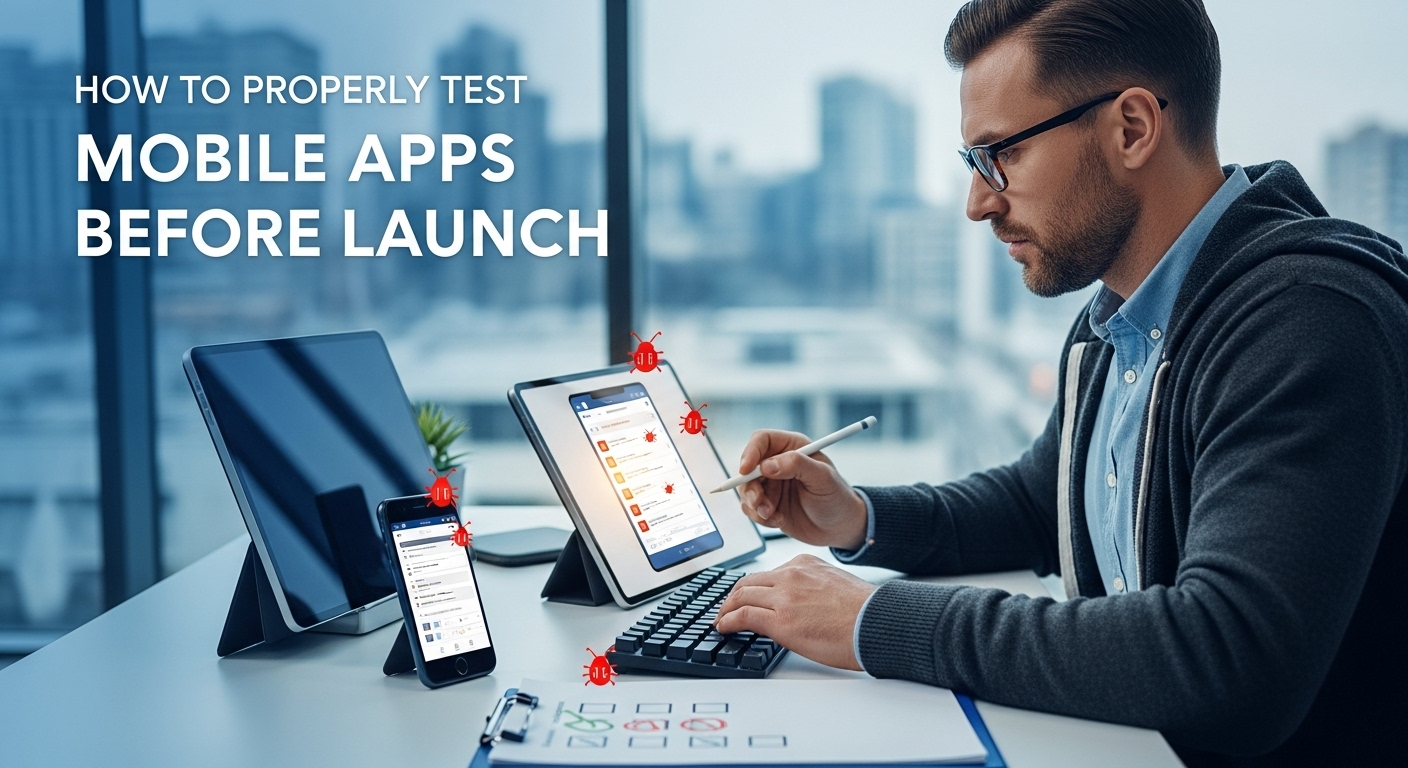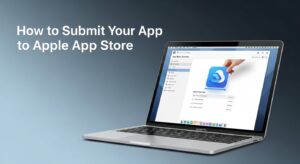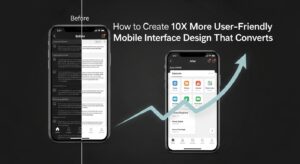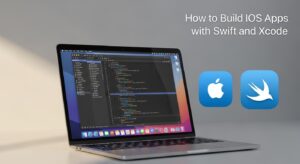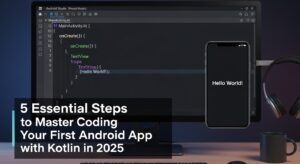Mobile app testing is the cornerstone of successful app launches in today’s competitive marketplace. With over 3.5 million apps available on Google Play Store and 2.2 million on Apple’s App Store, ensuring your application stands out through superior quality is non-negotiable.
The mobile app development industry loses billions annually due to poor app quality and rushed launches. However, comprehensive testing strategies can prevent these costly mistakes and position your app for success.
This guide explores seven essential mobile app testing methodologies that will transform your development process and guarantee a smooth launch experience.
Why Mobile App Testing Before Launch is Critical
The High Cost of Poor Testing
Statistics reveal that 21% of users abandon an app after just one use due to performance issues. Additionally, apps with poor ratings rarely recover, making initial quality crucial for long-term success.
Poor mobile app testing leads to:
- Decreased user retention rates
- Negative reviews and low app store ratings
- Increased customer support costs
- Brand reputation damage
- Revenue loss from refunds and chargebacks
Benefits of Comprehensive Testing
Thorough app testing before launch delivers measurable benefits:
- 85% higher user satisfaction scores
- 60% reduction in post-launch bug reports
- 40% increase in user retention rates
- Improved app store optimization rankings
- Enhanced brand credibility and trust
7 Essential Mobile App Testing Strategies
1. Functional Testing for Core App Features
Functional testing validates that your mobile app testing process covers all primary features and user workflows. This testing type ensures every button, form, and navigation element performs as designed.
Key Functional Testing Areas:
- User registration and login processes
- In-app purchases and payment gateways
- Data synchronization across devices
- Push notification delivery
- Social media integration features
Best Practices:
- Create detailed test cases for each feature
- Test both positive and negative scenarios
- Verify error handling mechanisms
- Document all functional requirements clearly
2. Performance Testing Under Various Conditions
Performance testing examines how your app behaves under different load conditions, network speeds, and device specifications. This mobile app testing component prevents crashes and ensures smooth user experiences.
Performance Metrics to Monitor
Metric | Target Range | Impact |
App Launch Time | 2-3 seconds | User retention |
Memory Usage | <100MB | Device compatibility |
Battery Consumption | Minimal | User satisfaction |
Network Response Time | <5 seconds | User experience |
CPU Usage | <30% | System stability |
Performance Testing Tools:
- Firebase Performance Monitoring – Real-time performance insights
- New Relic Mobile – Comprehensive app monitoring
- AppDynamics – End-to-end performance tracking
3. Compatibility Testing Across Devices and Platforms
Device fragmentation presents significant challenges in mobile app testing. Your app must function flawlessly across various screen sizes, operating system versions, and hardware configurations.
Critical Compatibility Factors:
- Operating system versions (iOS 14+, Android 8+)
- Screen resolutions and aspect ratios
- Hardware specifications (RAM, processor, storage)
- Network connectivity types (3G, 4G, 5G, WiFi)
- Regional settings and languages
Compatibility Testing Strategy:
- Identify target device matrix based on user demographics
- Prioritize testing on popular device models
- Test across different OS versions systematically
- Validate app behavior on low-end devices
- Verify functionality with poor network conditions
4. User Interface (UI) and User Experience (UX) Testing
UI/UX testing ensures your app delivers intuitive, accessible, and visually appealing experiences. This mobile app testing phase focuses on design consistency and user interaction quality.
UI Testing Checklist:
- Visual design consistency across screens
- Button and link functionality
- Text readability and font consistency
- Color scheme appropriateness
- Icon clarity and recognition
- Loading states and progress indicators
UX Testing Elements:
- Navigation flow intuitiveness
- User onboarding effectiveness
- Error message clarity
- Accessibility compliance (WCAG 2.1)
- Touch target sizes and spacing
5. Security Testing for Data Protection
Security vulnerabilities can destroy user trust and expose your business to legal liabilities. Comprehensive security testing within your mobile app testing strategy protects sensitive user data.
Essential Security Tests:
- Data encryption verification
- Authentication mechanism validation
- Authorization control testing
- Secure communication protocol checks
- Personal data handling compliance
- Third-party integration security
Security Testing Tools:
- OWASP Mobile Security Testing Guide – Industry standard framework
- Veracode – Static application security testing
- Checkmarx – Comprehensive security scanning
6. Automated Testing Implementation
Automated testing accelerates your mobile app testing timeline while maintaining consistency and accuracy. Automation particularly excels at regression testing and repetitive validation tasks.
Automation Testing Benefits:
- 70% faster test execution
- Consistent test results
- Reduced human error rates
- Continuous integration support
- Cost-effective long-term solution
Popular Automation Tools:
Tool | Platform | Strengths |
Appium | Cross-platform | Open source, flexible |
Espresso | Android | Native integration |
XCUITest | iOS | Apple ecosystem optimization |
Detox | React Native | JavaScript-based testing |
7. Beta Testing with Real Users
Beta testing provides invaluable real-world feedback before your official launch. This final mobile app testing phase reveals issues that internal testing might miss.
Beta Testing Strategies:
- Closed Beta: Limited user group (50-200 testers)
- Open Beta: Public testing with larger audience
- Staged Rollout: Gradual release to increasing user percentages
Beta Testing Best Practices:
- Define clear testing objectives and success metrics
- Provide comprehensive feedback collection mechanisms
- Establish regular communication channels with testers
- Implement feedback tracking and prioritization systems
- Document all issues and resolution timelines
Mobile App Testing Tools and Platforms
Cloud-Based Testing Solutions
Cloud platforms offer scalable testing environments without hardware investment requirements:
- AWS Device Farm – Access to real devices for comprehensive testing
- Google Firebase Test Lab – Automated testing across Android devices
- Sauce Labs – Cross-platform testing automation
- BrowserStack App Testing – Real device testing in the cloud
Manual Testing Platforms
Manual testing remains crucial for user experience validation:
- TestRail – Test case management and execution tracking
- Zephyr – Integrated testing lifecycle management
- qTest – Comprehensive quality assurance platform
Creating Your Mobile App Testing Checklist
Pre-Launch Testing Timeline
8 Weeks Before Launch:
- Complete functional testing implementation
- Begin compatibility testing across target devices
- Initiate security testing procedures
6 Weeks Before Launch:
- Finalize performance testing and optimization
- Complete UI/UX testing and design adjustments
- Implement automated testing frameworks
4 Weeks Before Launch:
- Launch closed beta testing program
- Begin user feedback collection and analysis
- Address critical bugs and performance issues
2 Weeks Before Launch:
- Complete final regression testing
- Conduct security audit and vulnerability assessment
- Prepare app store submission materials
Essential Testing Documentation
Comprehensive documentation ensures testing consistency and knowledge transfer:
- Test case specifications and expected outcomes
- Bug reporting templates and severity classifications
- Device compatibility matrices and testing results
- Performance benchmarks and optimization recommendations
- Security testing reports and compliance verification
Common Mobile App Testing Mistakes to Avoid
- Inadequate Device Coverage: Testing only on latest devices ignores significant user segments. Ensure your mobile app testing strategy includes older devices and various price points.
- Ignoring Network Conditions: Apps often fail under poor connectivity. Test offline functionality, slow networks, and connection interruptions thoroughly.
- Insufficient Load Testing: High user volumes can crash unprepared apps. Simulate peak usage scenarios during your testing phase.
- Overlooking Accessibility: Accessibility compliance expands your user base and may be legally required. Include accessibility testing in every mobile app testing cycle.
Measuring Testing Success
Key Performance Indicators (KPIs)
Track these metrics to evaluate your mobile app testing effectiveness:
- Bug Detection Rate: Percentage of bugs found before launch
- Test Coverage: Percentage of code covered by tests
- User Satisfaction Scores: Beta tester feedback ratings
- Performance Benchmarks: Load times and resource usage
- Security Compliance: Vulnerability assessment results
Post-Launch Monitoring
Continue monitoring after launch to validate testing success:
- App store ratings and reviews analysis
- Crash reporting and error tracking
- User behavior analytics and engagement metrics
- Performance monitoring and optimization opportunities
Advanced Mobile App Testing Techniques
- Exploratory Testing: Exploratory testing uncovers issues through unscripted user interactions. This approach simulates real user behavior and discovers unexpected problems.
- Monkey Testing: Automated random input testing reveals app stability under unpredictable user actions. Monkey testing tools generate random taps, swipes, and inputs.
- Crowd Testing: Crowd testing leverages diverse global testers for comprehensive coverage. This approach provides varied perspectives and real-world usage scenarios.
Future of Mobile App Testing
AI-Powered Testing
Artificial intelligence is revolutionizing mobile app testing through:
- Automated test case generation
- Intelligent bug prediction
- Performance optimization recommendations
- User behavior analysis and testing optimization
Continuous Testing Integration
Modern development practices integrate testing throughout the development lifecycle:
- Continuous integration/continuous deployment (CI/CD) pipelines
- Automated testing triggers for code changes
- Real-time feedback and rapid iteration cycles
Conclusion
Successful mobile app testing requires comprehensive planning, diverse testing methodologies, and continuous improvement. The seven essential strategies outlined in this guide provide a roadmap for delivering high-quality mobile applications.
Remember that mobile app testing is an investment in your app’s success, user satisfaction, and long-term business growth. Implementing thorough testing practices before launch prevents costly post-release issues and establishes your app as a reliable, trustworthy solution.
Start implementing these mobile app testing strategies today to ensure your upcoming launch exceeds user expectations and achieves sustainable success in the competitive mobile marketplace.

